A book by: DOLPH KESSLER PHOTOGRAPHY | MICHIEL DRIEBERGEN, KEES VAN RUYVEN, RUUD MEIJ ESSAYS | HERMAN ZONDERLAND MAPSUPPLEMENT
Lviv, formerly named Leopolis, Lemberg, Lwów and Lvov, is one of the most beautiful cities in Europe, but has been hidden behind the Iron Curtain in Ukraine for many years. It is a city in which Hitler and Stalin were given free rein, resulting in the systematic destruction of a thriving Central-European culture. Most residents were expelled or murdered. Yet the buildings have been miraculously salvaged.
How does a city with such a magnificent past and gruesome decline, cope with the after effects? How do the current residents deal with that heritage?
Five Dutchmen become intrigued by this question. Documentary photographer Dolph Kessler penetrates with his photographs deep into the Lviv of today. Journalist Michiel Driebergen, urban planner Kees van Ruyven and philosopher Ruud Meij explore the history, the present and the future of Lviv in three fascinating essays. Herman Zonderland made an unique map supplement. Together, they created this book as a declaration of love for Lviv, an undiscovered pearl in the heart of Europe.
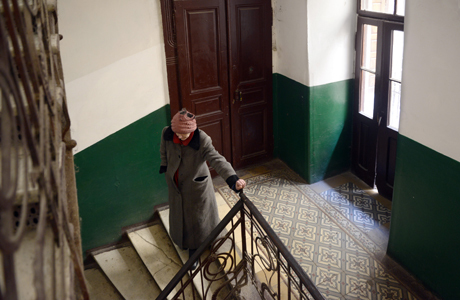
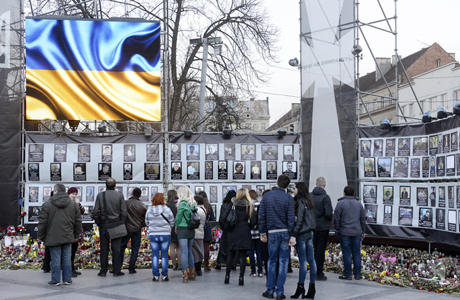

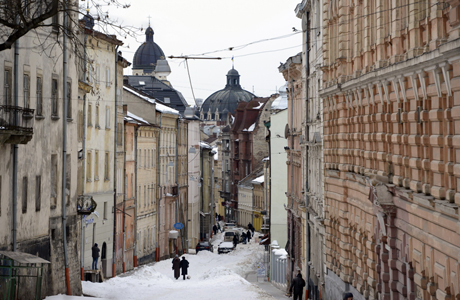
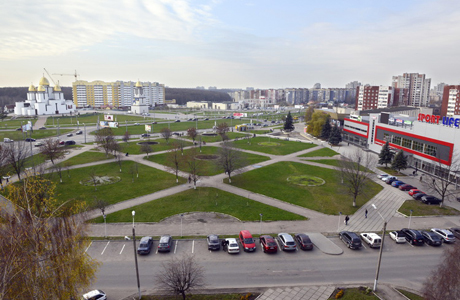
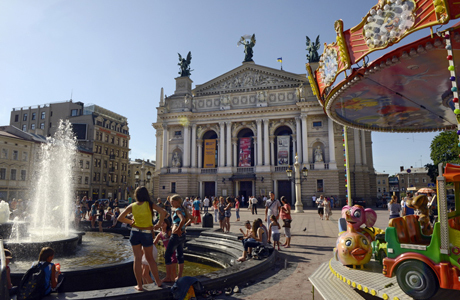
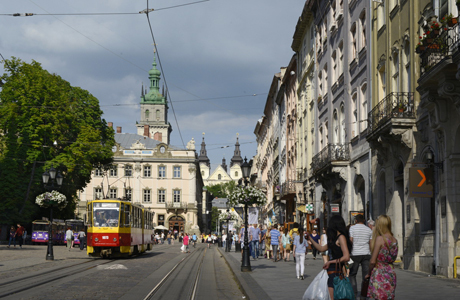

Lviv, City of Paradoxes
When documentary photographer Dolph Kessler visited Lviv for the first time in October 2012, he wais profoundly impressed. Lviv is a magnificent city with an imposing and dramatic history. He decided to produce a photobook of the city, together with Amsterdam urban planner Kees van Ruyven, philosopher Ruud Meij and documentary journalist Michiel Driebergen.
The photobook shows Lviv in all its aspects: the attractive medieval centre, the gigantic districts of the Austrian-Hungarian era encircling the centre, the apartment block districts of the Soviet period and the new suburbs at the outskirts of the city. Dolph Kessler also portrays many residents of the city and visitors searching for their lost family history.
Apart from the photographs, the book includes three essays. Journalist Michiel Driebergen describes the history of both former and current inhabitants of the city. In the twentieth century the buildings of Lviv survived all wars, yet the city lost ninety percent of its population; the Poles were expelled and the Jews were murdered. How does the present population, mainly newcomers, stand in relation to that heritage?
Urban planner Kees van Ruyven traverses the city by tram and writes about the urban qualities of Lviv. The city centre is won over by the tourism industry and the nineteenth-century districts are of outstanding allure. How does Lviv preserve those extraordinary qualities and how do the residents cope with the increasing use of cars?
Philosopher Ruud Meij with his expertise as an integrity management consultant, deals with the most important problem that currently plagues the city: corruption. Taking into account the multicoloured and dramatic history of the city, he expounds how the inhabitants of Lviv could recover the citizenship of this beautiful Central European provincial city.
Lviv, City of Paradoxes will be available on 20 September 2014
Languages: Ukrainian, English and Dutch
“This visual journey brings together the richness of contemporary urban life and the complexities of contested heritage in a moment of hope and change in Ukraine” - Sofia Dyak
“Whenever an enemy stood at the gates of Lviv, it meant a state of emergency for the rest of Europe” - Karl Schlögel
“For the first time a book that shows Lviv in all its glory, and with its day-to-day battle. A great asset” - Marion Kovalchuk
Herman Zonderland has made a unique map supplement to Lviv, City of Paradoxes, Nine maps show the position of Lviv and the region of Galicia, from the foundation of the city until today. See this preview! The map from the year 1939, when Lviv was under Polish administration.
Book launch on Friday, September 12 in the Potocki Palace, Lviv.
The first Ukrainian-English books will be given to the mayor of Lviv Mr. Andriy Sadoviy.
Time: 16.30 - 18.00 hrs / Address: 15, Kopernika Street
Opening on Saturday, September 13 of a photo exhibition in the Gary Bowman Art Gallery
The exhibition will be opened by Bogdan Pankevych, Dutch consul in Lviv. Music by Yaroslav Sabov. Time: 16.00 hr / Address: 18, Nalyvaika Street. The exhibition will last until Saturday, October 5.
The future of Lviv, discussion on Wednesday, September 10 in the
Center for Urban History of East Central Europe
What will be the future of Lviv?
Time: 18.00 - 20.00 hrs / Address: 6, Akademia Bohomoltsia Str.
The future of Lviv, discussion on Thursday, September 11 in Communa
What will be the future of Lviv?
Time: 19.00 - 21.00 hrs / Address: 1, Halycka Street
256 pages, format: 29 x 23 cm, hardcover
150 photo’s by Dolph Kessler
3 essays by Michiel Driebergen, Kees van Ruyven and Ruud Meij
10 maps by Herman Zonderland.
Price: 35 euro. Mauritsheech Publishers in cooperation with Apriori Publishers Lviv
ISBN 978-90-821873-1-1

This is a website from Michiel Driebergen and Dolph Kessler
Contact: vriendenvanlviv@gmail.com +31(0) 61528 5588
The texts on this page: Michiel Driebergen and Dolph Kessler (c) 2014
Webdesign: Studio Beeldstern Techniek: Content Power (c) 2014